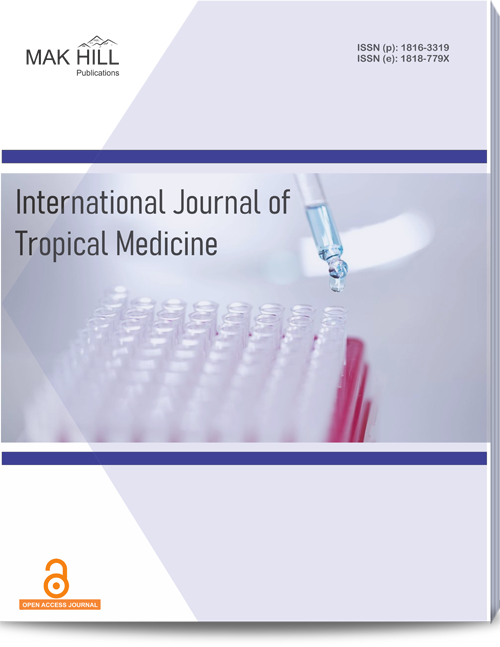
International Journal of Tropical Medicine
ISSN: Online 1818-779XISSN: Print 1816-3319
Abstract
Males (61.7%) outnumbered females (38.3%) in this study. About 5% of the study subjects had type 1 diabetes mellitus and 95% had type 2 diabetes mellitus. The mean duration of type 1 diabetes mellitus was 47.2 years and type 2 diabetes mellitus was 26.83 years. 93.3% of the study subjects in this study were known diabetics and 6.7% of the cases were incidental cases detected during the time of examination of cutaneous manifestations. About 37.5% of the study subjects had diabetes since 1‐5 years and 40% had since 5‐10 years. About 40.6% of the study subjects had cutaneous infections, 32.6% had cutaneous manifestations which are not specific to diabetes mellitus. Strong to weak association of cutaneous manifestations to diabetes mellitus was present in 24.6% of the cases. About 21.7% of the patients in this study had fungal infections, 15.2% had bacterial infections and 3.6% had viral infections. Among the fungal infections, Candidal balanoposthitis, Candidal vulvovaginitis, Intertrigo, Onychomycosis, Tinea corporis, Tinea cruris and Tinea mannum were common. Herpes zoster was the common viral infection which was present in 2.9% of the patients and verruca vulgaris was present in 0.7% of the study subjects. In the cutaneous manifestations which had strong to weak association with diabetes mellitus, vitiligo, Diabetic dermopathy, Acanthosis nigricans, Lichenplanus, Xanthoma, Granuloma annualare, Kyrle’s disease, Scleroderma of Buschke and Bullosis diabeticorum were present in this study. Leucocytoclastic vasculitis, Porokeratosis, Contact dermatitis, keloids and Lipodytsrophy were the other non specific manifestations. Majority of patients with cutaneous manifestations (80.5%) were seen in patients with fair to poor control of diabetes mellitus. There was a statistical significance (p=0.000) between cutaneous infections and glycosylated hemoglobin. About, 42.9% cutaneous infections, 20.0% with non specific lesions to DM and 47.1% with strong to weak associations with DM had poor glucose control. About 40.4% of the patients with cutaneous infections, 35.7% of patients with lesions not specific of diabetes mellitus and 48.4% of patients with strong to weak association of diabetes mellitus had diabetes since 5‐10 years.
How to cite this article:
Ravipati Neelima, K. Sumana and Mohammed Imran Ali. A Study of Skin Manifestations in Patients with Diabetes Mellitus and their Correlation with Glycosylated Hemoglobin.
DOI: https://doi.org/10.36478/10.36478/makijtm.2021.4.53.56
URL: https://www.makhillpublications.co/view-article/1816-3319/10.36478/makijtm.2021.4.53.56